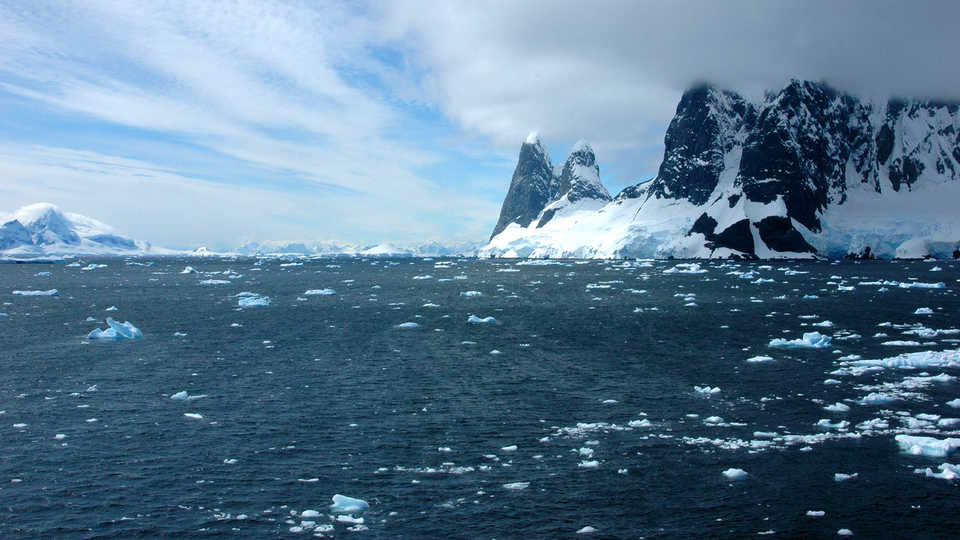
The northwestern opening to the Gerlache Strait and Southern Ocean near the Antarctic Peninsula. Photo: Peter Rejcek, NSF.
Antarctica may be tucked away at the bottom of Earth but its global importance shouldn’t be underestimated. As the planet’s largest concentration of snow and ice, it serves to bounce excess solar heat back into space more effectively than any other surface. This reflectivity helps maintain livable conditions and potentially keeps the greenhouse effect at bay.
The Southern Ocean surrounding Antarctica is equally significant. It encircles the world unimpeded by land masses, creating the Antarctic Circumpolar Current that feeds into warmer subantarctic waters that fosters a zone of upwelling nutrients. These nutrients nourish vast amounts of phytoplankton that support marine food chains in Antarctica and beyond. The Antarctic Circumpolar Current also influences the world's weather patterns as well as taking up a considerable amount of carbon dioxide from the atmosphere.
As such, Antarctica offers itself up to scientists as the world’s most important natural laboratory. Its continental ice — as much as 3 miles thick — contains environmental records dating back over 800,000 years, all obtainable from ice cores. The continent’s relatively pristine state also provides sensitive indicators for present-day shifts in ice sheet size, sea level rise, and wildlife migration. Researchers continually monitor these and other factors to understand how our planet works and where climate change is taking us.